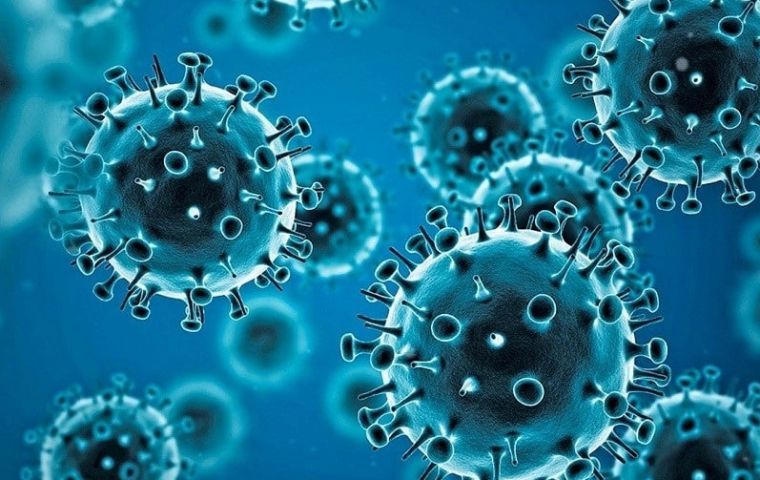MercoPress. South Atlantic News Agency
New FLiRT variants of SARS-Cov-2 spreading in US
 The FLiRT variants have two additional mutations that set them apart from JN.1
The FLiRT variants have two additional mutations that set them apart from JN.1 Health authorities in the United States are warning about the latest version of Covid-19 with the appearance of the so-called FLiRT variations, which represent the new version of the SARS-CoV-2 virus, which was detected the Centers for Disease Control and Prevention (CDC) in sewage samples. Between April 14 and 27, a FLiRT variant called KP.2 accounted for around 25% of the detections, up from about 10% in the previous two-week period ending April 13.
Patients with FLiRT show on average the same symptoms as those with JN.1, such as respiratory problems and fatigue, fever or chills, cough, sore throat, nasal congestion or discharge, headache, muscle aches, shortness of breath, loss of taste or sense of smell, drowsiness, and mild complications to the digestive organs (upset stomach, mild diarrhea, or vomiting). However, symptoms and severity vary from one person to another, it was also explained.
Doctor Megan Ranney, dean of the Yale School of Public Health, told WebMD that the FLiRT variants show some worrisome changes such as a modification in the spike protein which plays a key role in the virus entry into human cells and triggering disease.
Experts point to declining vaccination rates among Americans as one of the causes behind the latest surge. Since Sept. 2023, only 22.6% of Americans have been vaccinated against the updated Covid 2023-2024, the CDC noted in a report. Vaccines are still effective against these new variants, but ongoing research is crucial to monitor their impact and adapt vaccination strategies as needed.
“We have a population of people with waning immunity, which increases our susceptibility to a wave,” Dr. Thomas Russo, chief of infectious diseases at the University of Buffalo's Jacobs School of Medicine and Biomedical Sciences told WebMD.
The FLiRT variants are named after their mutations and include two main strains: KP.2 and KP.1.11.
KP.2 is currently the dominant strain in the U.S., surpassing the previously prevalent JN.1 (omicron subvariant) that caused a surge in cases during the winter. KP.1.1, is less widespread than KP.2, accounting for approximately 7.5% of infections nationwide.
The FLiRT variants have two additional mutations that set them apart from the original JN.1. Scientists believe that KP.2 and KP.1.1 may be better at evading the immune system due to their spike protein mutations.




Top Comments
Disclaimer & comment rulesCommenting for this story is now closed.
If you have a Facebook account, become a fan and comment on our Facebook Page!